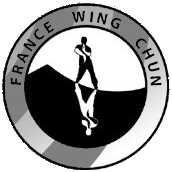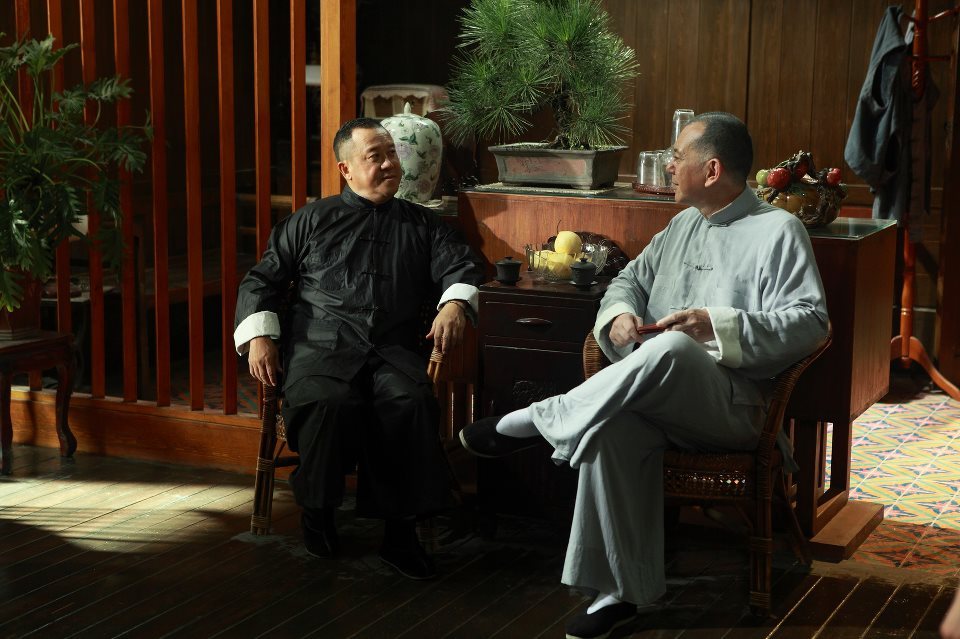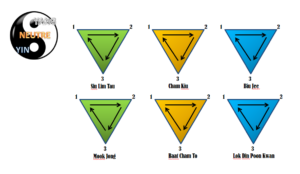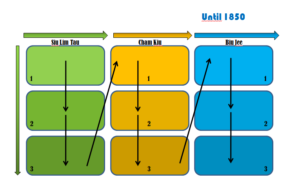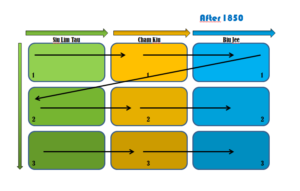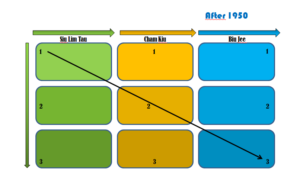My Wing Chun is the one ! No the mine is the one !! Episode 1
We see everyday each Wing Chun school claiming it is traditional, each student believing in its lineage will struggle trying to impose its convictions, my school is the true one, the traditional one.
It is important to re-establish the truth !
A tradition is a way of doing things, to convey a way of thinking or an attitude that will be passed from a generation to another, so from this prerequisite, we can say that each Wing Chun school adhering to the three bare-hands forms, wooden dummy form and weapons forms are within Wing Chun style’s tradition.
Great, I could stop there because I just more or less said that every Wing Chun schools are traditional and as a consequence everyone is right, but I invite you to broaden your field of consciousness.
Because if each school follows part of the tradition, it also remains true that this is only the tip of the iceberg, that this tradition we all follow is the bare minimum and that we are loosing the hidden part of Wing Chun’s iceberg.
I therefore invite you to make a review and come seek for the deep nature of Wing Chun.
This martial art was born in China and is immersed in the roots of the taoist tradition. It is therefore based on Taoism (teaching of the Way), that is originally a philosophy and for some will even become a religion.
Taoism is based on the principle that is the origin of everything: Tao.
I will not spend to much time in explanations as the aim here is to stay close to our art that is the Wing Chun, but is is important to understand Wing Chun’s foundations that number 9 is a very special number for taoists. As a proof, Tao Te King contains 81 chapters corresponding to square 9, that is a symbol of perfection.
Wing Chun was created with this basis of 9:
There exist three bare hands forms, each form being itself made of three sections (3×3=9) and there are three forms with support (wooden dummy) and weapons (knife, long pole), each forms being again divided in three sections (3×3=9).
These two parts put together create perfection 9×9=81.
Traditional representation is with geometrical picture of the triangle that symbolizes one of the most known precept of Tao that can be found in chapter 42 of Tao Te King:
« Tao produced one, one produced two, two produced three, and three produced the ten thousand things » .
By the way there is a similar maxim in « Kuen Kiut », wisdom words of Wing Chun:
« Ten thousand techniques come from the center ».
To keep it simple, you have to figure out that there are always at least three ways/ideas/concepts in each form you will have to find and then practice, what will allow creating the 10000.
These 10000 are the representation of another taoism symbol: the five movements.
Triangle representation being quite difficult to understand, I will use an illustration with dissection into rectangles. This allows tracing the learning process as it was before 1850 (1820-1850). Of course there may have been other ways, but no historical writings allow being sure about that.
We can see that in the traditional building up, one first went through all visions (versions) of a Tao before going to the next one, learning of one form might then take several years.
After 1850, learning process changed. It is said that historical events motivated this change (Mandchous were in power, and ethnic Chinese wanted to quickly arm the people to push out this one they considered as the invader).
We can see then that one entered into each form quicker but came back to each after seeing the whole at least once.
Then there was another change in years 1950 with industrialization, but also arrival of Western teaching methods, the most striking example being Ip Man who had the chance to study at St Stephen College of Hong Kong.
In this modification brought in years 1950, we can observe that teacher’s choice was to go through all three taos as fast as possible. Siu Lim version is then a Yang one to acquire practical bases, to quickly pass in an offensive Cham Kiu and then direct in the Biu Jee.
Chinese teachers exaggerated this choice as soon as they had Westerners, because these students often came for a short period of time, they did not have so much time to learn, but Chinese people being proud, visible results were required, so each yang version was chosen and you’re done!
We clearly see how teaching was compressed, everything is a matter of time, this time that is now running out.
Before we did take the time, we would learn each an every version and if a life wasn’t sufficient this was not an issue. But with industrialization, evolving culture, today we are trying to live several lives in one and every teaching systems, including Wing Chun, are compressing to keep only certain things, not because this one or that one is not good enough, but because we do not have enough time anymore, or at least less and less time. If we keep going like that obviously, knowledge will be dissolved and lost.
Nowadays by comparison, traditional teaching might look confusing with its comings and goings through forms and sections, but this is however the guarantee to not loose this system’s richness. So now which way do you think is followed at France Wing Chun ? Patience, you will know pretty soon in episode 2 !
